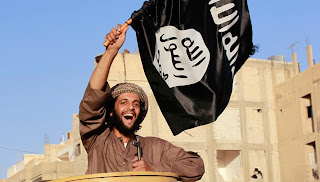Behind Go Back To The Quran Slogan
"Go back to the Qur'an and Hadith!" This was an important and widespread slogan voiced by the modernist Muslims in Indonesia, especially in Java and West Sumatera, at the beginning of the twentieth century. Their strong appeal to Go back to the Qur'an and Hadith, that is, to return to Islamic purity, was welcomed enthusiastically by their supporters. Along with voicing that slogan, they attacked and condemned some religious practices of traditionalist Muslims, such as qunut, tawassul and tarekat (tariqah). The Muslim modernists rejected those kinds of religious practices and regarded some of them as bid’ah (religious innovation), which had to be abandoned. In contrast, the traditionalist Muslims argued that those religious practices they performed were not bid'a and not contrary to the teachings of Islam. Consequently, religious disputes occurred between the two groups, which consumed a great deal of energy, and time in arguing with one another. The religious disputes between the modernists and the traditionalists dealt in fact with furu' (detail, branch) questions and not with ushul (root, principle) questions. However, as Clifford Geertz said, the conflict between the two groups "was indeed a sharp and bitter one.". As a result, this conflict led to an unharmonious relationship, characterized by tension and disunity between the two groups.
There is no doubt that the modernist Muslims derived their inspiration and influence primarily from Wahhabism and the ideas of reform of Muhammad Abduh (1849-1905) and Jamaluddin al-Afghani (1839-1897). As we know, the Wahhabi movement began formally in 1747 after its founder, Muhammad bin Abd al-Wahhab (1792), had visited many Islamic countries and came to realize that religious innovation had obtained currency and that superstitious uses had spread and were indistinguishable from idolatry. Upon returning to his homeland in Central Arabia, Muhammad bin Abd al-Wahhab and his followers therefore began a campaign of religious purification.
The Wahhabi teaching was formally accepted by the Saudis. According to Uthman bin Bishr, in their zeal to rid Islam of its cult of saints and other innovations they sacked Karbala in 1801, captured Makkah in 1803 and Medina the following year, destroyed tombs and purged these cities of all semblances of idolatry. When Karbala was attacked, a considerable Saudi force massacred some five thousand Shi'is, demolished the domes of various tombs including that of the Prophet's grandson, Husayn plundered the whole city. Wahhabism continued to flourish when Abd al-Aziz bin Saud came to power in Makkah after his defeat of Sharif Husayn in 1925. Muhammad ibn Abd al-Wahhab was regarded as a reformer not in the sense that he desired a change in the doctrines of Islam or even a new interpretation of its tenets, but in the sense that he felt it his mission to denounce innovations and accretions, and preach a return to Islam's former purity.






0 komentar: